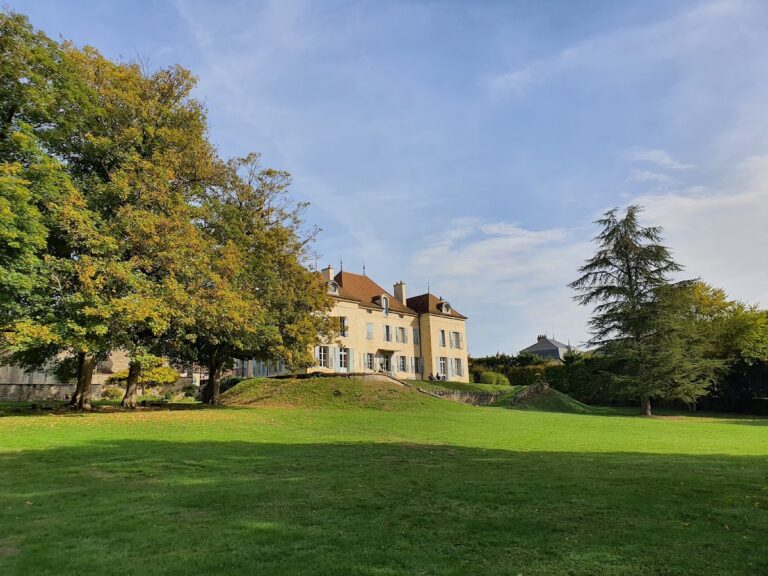Château de Savigny-lès-Beaune: A Historic Castle and Museum in Burgundy, France
Visitor Information
Google Rating: 4.5
Popularity: Medium
Google Maps: View on Google Maps
Official Website: chateau-savigny.com
Country: France
Civilization: Unclassified
Remains: Military
History
The Château de Savigny-lès-Beaune is located in the commune of Savigny-lès-Beaune in modern-day France. It was originally constructed in the mid-14th century by the Burgundian civilization under the direction of Jean de Frolois, who served as Marshal for Duke Odo IV of Burgundy.
The first phase of the château dates back to around 1340 when Jean de Frolois built it as a fortified castle for Duke Odo IV. This structure was part of the defensive and feudal system of Burgundy during the Middle Ages. However, its military role made it a target during periods of conflict. In 1478, King Louis XI of France ordered the château’s destruction to punish its owner for supporting Duchess Mary of Burgundy and her husband Maximilian of Habsburg during the turmoil following the death of Charles the Bold, marking the Burgundy succession war from 1477 to 1482. The destruction left only fragments from this era intact, notably the corbels of the machicolations—stone supports from which defenders could drop objects or pour boiling liquids—on two surviving towers.
Following the late medieval period, the château saw a shift in ownership throughout the 17th century. The estate changed hands among several families, including the Juret and Massol families. Eventually, Jean Bouhier de Savigny became a major figure by acquiring all shares of the seigneury between 1640 and 1668, uniting the property under his family’s control. His son, Bénigne Bouhier, added a new residence called the “Petit Château” around 1671, which stands beside the older site.
In 1689, the château passed into the hands of the Migieu family. Through marriage, it later became owned by General Count de La Loyère and his descendants. The château also intersects with prominent historical figures: in 1719, during her exile in Burgundy, Louise-Bénédicte de Bourbon, Duchess of Maine and granddaughter to Duke Louis II of Bourbon-Condé, was confined to the estate as part of her forced residence.
The château’s connection to viticulture is highlighted by the presence of Jules Guyot, a notable 19th-century vine-growing specialist, who died there during a stay. The property’s historical importance was recognized officially on 18 October 1940, when both the main château and the Petit Château were listed as historic monuments by the French authorities.
In the late 20th century, the château entered a new chapter under the ownership of Michel Pont, a viticulturist and former rally driver. He undertook significant restoration projects and developed the site into a museum complex while maintaining the château’s historical legacy.
Remains
The Château de Savigny-lès-Beaune occupies an estate that includes the remains of the medieval fortified castle and the adjacent Petit Château dating from the late 17th century. The original 14th-century fortress was constructed as a defensive stronghold with stone walls and machicolations, which are openings in the parapets allowing defenders to attack enemies directly beneath the walls. Today, only the corbels supporting these machicolations on two towers survive from this earliest phase, preserved as fragments that reflect the castle’s martial origins and the destructive events of 1478.
The Petit Château, founded around 1671 by Bénigne Bouhier, stands next to the ruins of the initial fortress. This later structure reflects the architectural and residential style of the 17th century rather than medieval fortification methods. Both buildings form part of the estate set within a vast vineyard domain of about 20 hectares located in Burgundy’s Côte de Beaune region, an area renowned for wine production.
In addition to these historic constructions, the site accommodates a variety of museums that house extensive collections related to agriculture, transport, and technology. Within the Petit Château, visitors find a display of agricultural machinery, including twenty-five prototype straddle tractors—tractors designed to ride over crops with minimal damage. The main château holds exhibits of traditional wine presses and hand tools used in viticulture.
The estate’s grounds feature a remarkable open-air collection of military and jet aircraft along with helicopters, illustrating advancements in aviation across the twentieth century. Inside the château itself, there is an assemblage of approximately 2,000 scale models of aircraft, offering a detailed look at aeronautical engineering on a miniature scale. The Petit Château also contains a significant collection of thirty-five Abarth racing cars alongside 600 scale model cars, reflecting the history of motor racing and automotive design.
Motorcycles ranging in date from 1903 to 1960 are displayed on the second floor of the château, complemented by about 1,200 scale motorcycle models. Additionally, some twenty historic fire engines are arranged under a canopy in the château’s park area. Across the collections, numerous engines and mechanical parts relating to automobiles, motorcycles, trucks, tractors, and bicycles further illustrate the estate’s role in preserving industrial and technological heritage.
Restoration activities beginning in 1979 have focused on preserving these historic buildings and adapting them for museum use. The château and Petit Château remain protected as historic monuments, ensuring the survival of both the architectural remains from medieval and early modern periods and the wide-ranging assemblages of vehicles, machinery, and models housed within.










